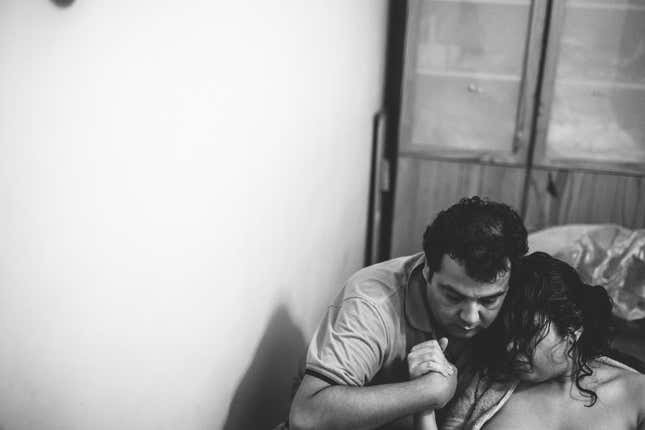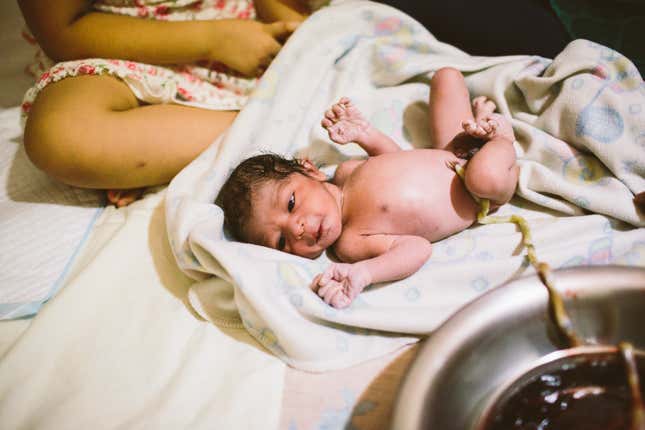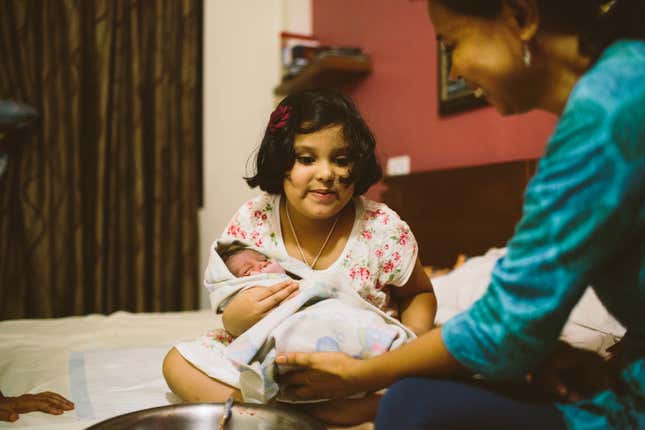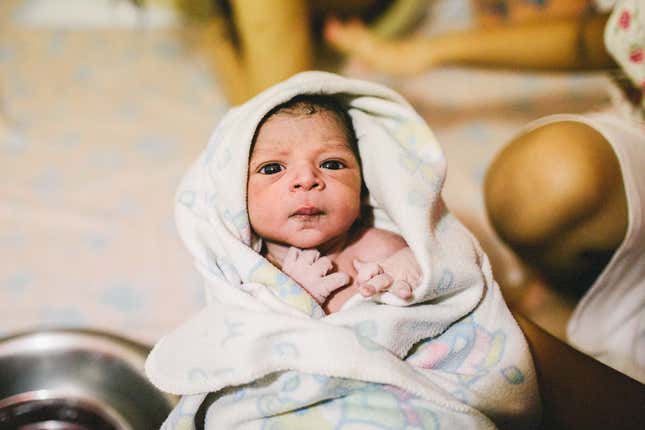
Tina Nandi is capturing the most intimate moments of women having babies at home.
Giving birth can be a complicated process at the best of times.
Hospitals can be alienating places if overworked doctors and nurses are unable to personally attend to mothers. But for a certain few with the resources for it, there is another option: natural births at home.
Photographer Tina Nandi is trying to raise awareness about natural births with a series of posts on her blog. Through the intimate pictures of Shivani Sinha, 27-year-old Nandi says she wants to shift the conversation.
“We tend to think birth is horrific and we are fearful of the experience,” said Nandi, who is based in Mumbai. “Most of the birth stories we hear from people around us and those portrayed by mainstream media tend to induce this fear in us. But there is an alternative to that and I think it is one of the biggest secrets kept from women today.”
Present at Sinha’s labour in June was Lina Duncan, a midwife trained in America who is now living in Mumbai. Duncan helped Sinha—who is herself a hypno-birthing practitioner—set up an in-house pool for a water birth and helped her through her six hours of labour.
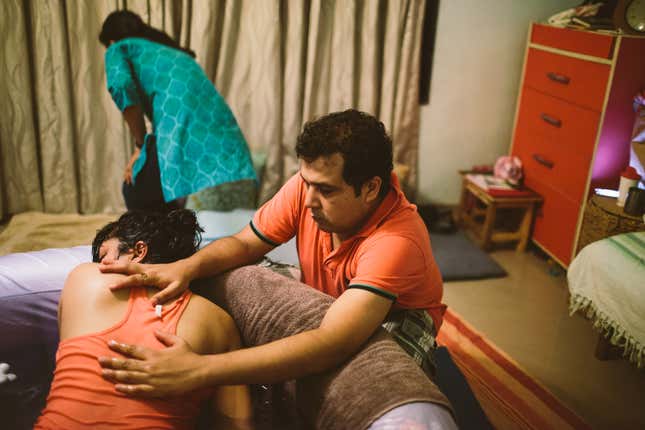
While midwives used to assist women giving birth around a century ago, with more men becoming obstetricians, births began to move into hospitals. Nandi does not deny the real impact medicine has had in reducing maternal mortality. She objects instead to the manner in which modern medicine often pushes for unnecessary surgical procedures.
“The idea is not to put down hospital birth because it can be a lifesaver and it is true that high-risk births have become less dangerous thanks to access to medical care,” she said. “But there tend to be a lot of interventions, such as induction of labour, caesarean sections and instrumental deliveries, that are done far more often than is healthy or needed or safe for women and their babies.”
She cites World Health Organisation statistics that put the ideal number of c-sections in a given population at 10-15%. A larger proportion than that has no discernible effect on maternal mortality rates, the organisation says. Yet, in parts of India, c-section rates have been rocketing, reaching almost 60% of all births in Chennai.
“Statistically, there are fewer deaths now, but we have lost the much-needed support and personalised care of midwives before and after birth,” she said. “Many women I know, who have given birth the first time in a hospital and the second time with a midwife, say there is a world of difference in the quality of care and dignity between the two experiences.”
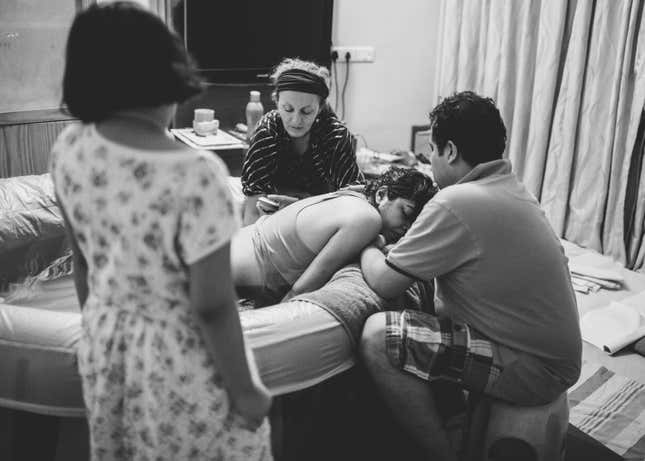
Nandi, who moved to Mumbai permanently a year and a half ago, has no children of her own. She had been researching natural birth for a year after she met a friend in Dehradun who was planning to hire a midwife to fly down from the United States to help her through her pregnancy.
“A few of our friends in America have had home and water births,” she said. “My husband and I plan to have children at some point, but we also want to live in Mumbai as long as we can. I was heartbroken because I thought the option of midwifery care would not be possible here.”
Eventually, she googled for midwives in Mumbai and found Duncan. She emailed her and told her about her interest in birth photography.
In January, Duncan invited her to attend a workshop in Mumbai conducted by midwives from the United States and the United Kingdom. After that, she put Nandi in touch with her client, Sinha, who was already interested in popularising natural birth.
Though they had been talking on the phone before that, Nandi met Sinha for the first time just 10 days before she went into labour. On June 9, when Sinha’s contractions began, Nandi made her way to her house and captured the first moments of her child, Arin
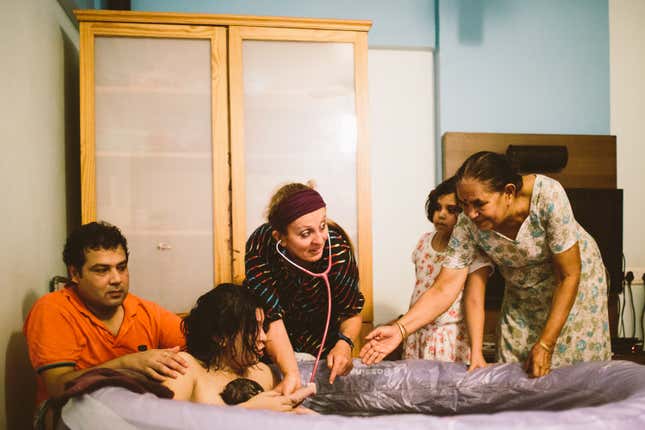
Nandi’s project is intersecting with her life with more than just photography. She is now training to be a doula, or an assistant to a midwife.
“After I posted this, I’ve had women writing to me if I know of any midwives in Bangalore or Calcutta, but I don’t,” she said. “I think that’s a tragedy. Even if we want to do birth differently, we don’t know how and who will help. I hope women will not just make informed choices regarding their own births, but will actively take part in redeeming contemporary birth culture in India—possibly by becoming doulas or midwives themselves.”
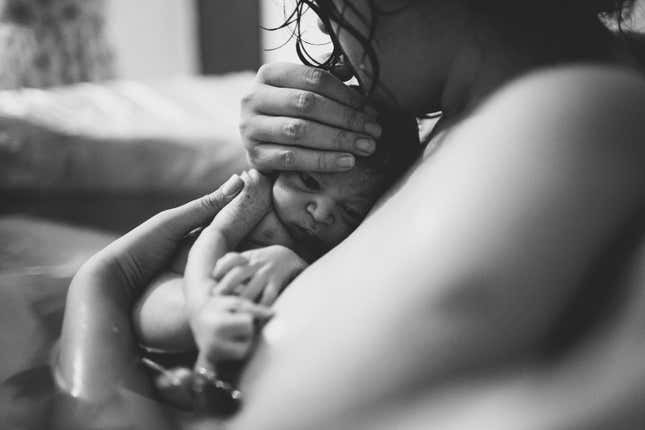
Here are some more images from Nandi’s blog.
